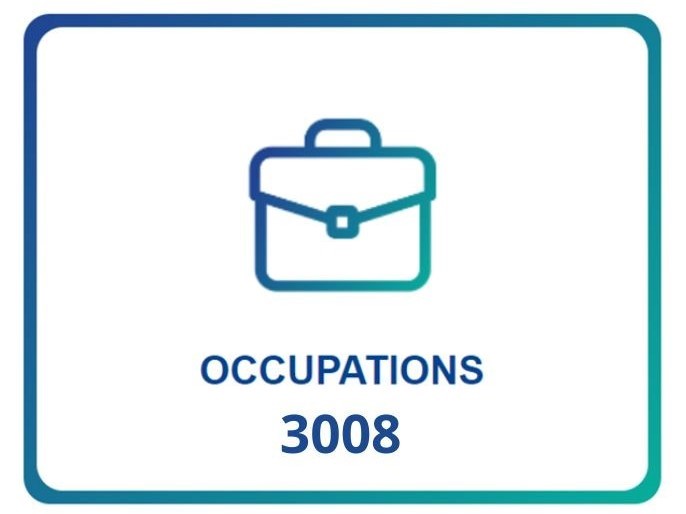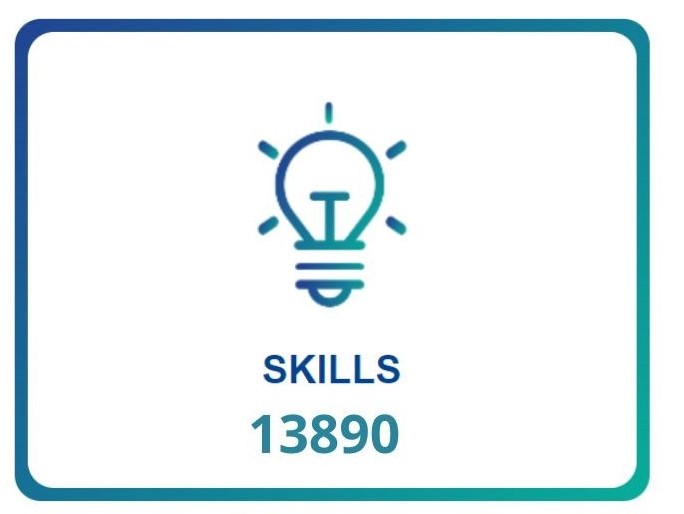ESCOpedia
ESCO is structured in two pillars:
-
Occupations pillar;
-
Skill & Competences pillar (consisting of knowledges, skills, and competences).
This two-tiered structured approach enables ESCO to organize terminology for the European labor market and education/training sector in a consistent, transparent and usable way.
Occupations
The ESCO occupations pillar is built on ISCO-08 which serves as the hierarchical structure for the occupations pillar. ISCO-08 provides the top four levels for the occupations pillar and ESCO occupations are located at level 5 and lower. In ESCO, each occupation is mapped to exactly one ISCO-08 code. Any occupation concepts relevant to the European labor market is allocated within this hierarchy.

Knowledge, skills and competences
The ESCO skills pillar distinguishes between i) skills/competences concepts and ii) knowledge concepts by indicating the skill type. There is however no distinction between skills and competences. Each of these concepts comes with one preferred term and a number of non-preferred terms in each of the 28 ESCO languages. Every concept also includes an explanation in the form of description. In ESCO v1 contains 13890 concepts and is organised in a full hierarchy.

What about Qualifications?
Qualifications are the formal outcome of an assessment and validation process which is obtained when a competent body determines that an individual has achieved learning outcomes to given standards. Information on qualifications at European level is now displayed in Europass, and comes from databases of national qualifications reflecting the National Qualifications Frameworks that are owned and managed by the European Member States. The qualification are structured using the European Qualifications Framework (EQF).
Relationships between the two pillars and qualifications:
Relationships make visible:
- Which knowledge, skills and competences terms are useful to describe jobs in a specific occupation,
- Which knowledge, skills and competences terms are useful to describe learning outcomes of a qualification,
- Which qualifications Member States consider relevant in the context of a specific occupation.
Between knowledge, skills and competences and occupations
The relationship between knowledge, skills and competences and occupations is defined as "essential" or "optional". "Essential" are those knowledge, skills and competences that are usually required when working in an occupation, independent of the work context or the employer. "Optional" refers to knowledge, skills and competences that may be required or occur when working in an occupation depending on the employer, on the working context or on the country.
Between knowledge, skills and competences and qualifications
In addition to the full learning outcome description, Member States or awarding bodies that provide data on qualifications can indicate which ESCO knowledge, skills and competence concepts are relevant in this context. This semantic annotation creates relationships between the qualifications and the skills pillar.
Between qualifications and occupations
The relationship between qualifications and occupations describes how Member States considered particular qualification or certificate relevant for occupations. It merely reproduces information that is managed and kept on a national level, in case the Member State transmits this information together with data on qualifications. In the course of the ESCO project such relationships are not being created actively.

